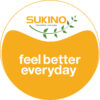Recovery after a stroke is a journey that often requires targeted rehabilitation to regain mobility and strength. Shoulder exercises play a crucial role in the rehabilitation process, particularly for stroke survivors aiming to improve stability and enhance overall upper body function. In this blog, we will delve into the importance of shoulder exercises for stroke patients, explore specific exercises designed to improve stability, mobility, and strength, and discuss the overarching benefits of incorporating these exercises into a comprehensive rehabilitation plan.
The Significance of Shoulder Rehabilitation After a Stroke
Stroke survivors frequently experience challenges related to upper body function, including shoulder weakness, reduced mobility, and stability issues. Addressing these issues through targeted shoulder exercises for stroke patients is paramount for several reasons:
1. Functional Independence: The shoulders are integral to performing daily activities, from dressing and grooming to reaching for objects. Improving shoulder function enhances a stroke survivor’s ability to regain independence in these essential tasks.
2. Enhanced Quality of Life: A functional and mobile upper body contributes to an improved quality of life. It allows individuals to engage more actively in social activities, hobbies, and daily routines.
3. Prevention of Secondary Complications: Shoulder complications, such as subluxation (partial dislocation) or frozen shoulder, can arise post-stroke. Targeted exercises help prevent these complications and promote overall shoulder health.
4. Support for Arm and Hand Function: The shoulders provide the foundation for arm and hand movements. Strengthening and mobilizing the shoulders create a supportive platform for improving fine motor skills in the arms and hands.
Shoulder Exercises for Stroke Patients
1. Pendulum Exercise:
Purpose: Improves shoulder mobility and flexibility.
Execution: Stand or sit, leaning forward and supporting the unaffected arm on a table or surface. Then allow the affected arm to hang freely, further gently moving the affected arm in a circular motion, creating a pendulum-like swing. These would be clockwise and counterclockwise motions.
2. Shoulder Flexion and Extension:
Purpose: Strengthens the muscles surrounding the shoulder joint.
Execution: Sit or stand with good posture. Then lift the affected arm forward, reaching as high as comfortably possible (shoulder flexion), and lower the arm back to the starting position. Further lift the affected arm backward, reaching behind as far as comfortably possible (shoulder extension). Repeat the flexion and extension movements in a controlled manner.
3. Shoulder Abduction and Adduction
Purpose: Targets the muscles responsible for moving the arm away from and toward the body.
Execution: Sit or stand with arms relaxed at the sides. Then lift the affected arm out to the side, away from the body (shoulder abduction), and lower the arm back to the starting position. Further, bring the affected arm across the front of the body (shoulder adduction), and repeat the abduction and adduction movements with control.
4. Wall Push-Ups
Purpose: Strengthens the muscles in the shoulders, chest, and arms.
Execution: Stand facing a wall with arms extended at shoulder height. Place palms flat on the wall, slowly bend the elbows, bringing the chest toward the wall, and push back to the starting position. Then adjust the distance from the wall to modify the exercise intensity.
5. External Rotation with Resistance Band
Purpose: Targets the rotator cuff muscles, improving shoulder stability.
Execution: Attach a resistance band to a fixed point at waist height, and hold the band with the affected hand, keeping the elbow bent at 90 degrees. Then rotate the forearm outward against the resistance, return to the starting position with control, and adjust the band tension to match individual strength levels.
Tips for Safe and Effective Shoulder Exercises for Stroke Patients
1. Start Gradually: Begin with gentle, controlled movements and gradually progress as strength and mobility improve.
2. Consistency is Key: Perform shoulder exercises for stroke patients regularly to experience lasting benefits. Consistency is crucial for rehabilitation success.
3. Modify Intensity as Needed: Adjust the range of motion and resistance based on individual capabilities. Listen to the body and avoid pushing too hard.
4. Include Both Sides: Even if one side is more affected, include exercises for both shoulders to maintain balance and symmetry.
5. Seek Professional Guidance: Consult with a healthcare professional or a qualified physical therapist to ensure that exercises are suitable for individual needs and to receive personalized guidance.
Comprehensive Rehabilitation Approach
Incorporating shoulder exercises for stroke patients into a comprehensive rehabilitation plan maximizes their effectiveness. This holistic approach may include:
1. Occupational Therapy: Occupational therapists specialize in activities of daily living and can tailor exercises to meet specific functional goals.
2. Physical Therapy: Physical therapists focus on overall mobility and can design a program that integrates shoulder exercises for stroke patients into a broader rehabilitation plan.
3. Assistive Devices: Implementing assistive devices, such as slings or braces, can provide support during exercises and daily activities.
4. Home Exercise Programs: Consistent practice of prescribed shoulder exercises at home reinforces gains made during therapy sessions and contributes to long-term improvement.
Conclusion
Shoulder exercises for stroke patients are pivotal in the journey of rehabilitation, promoting stability, mobility, and strength in the upper body. Tailoring exercises to individual needs, incorporating a variety of movements, and maintaining consistency are key principles in achieving positive outcomes. By embracing a comprehensive approach that includes professional guidance, targeted exercises, and a commitment to ongoing rehabilitation, stroke survivors can rebuild shoulder function and enhance overall quality of life. Always consult with healthcare professionals to create a personalized treatment plan that aligns with individual needs and circumstances.
We are India’s first comprehensive continuum care provider. We provide multidisciplinary out of hospital care to acute and post-acute and chronically ill patients at our critical care facilities and your home.


